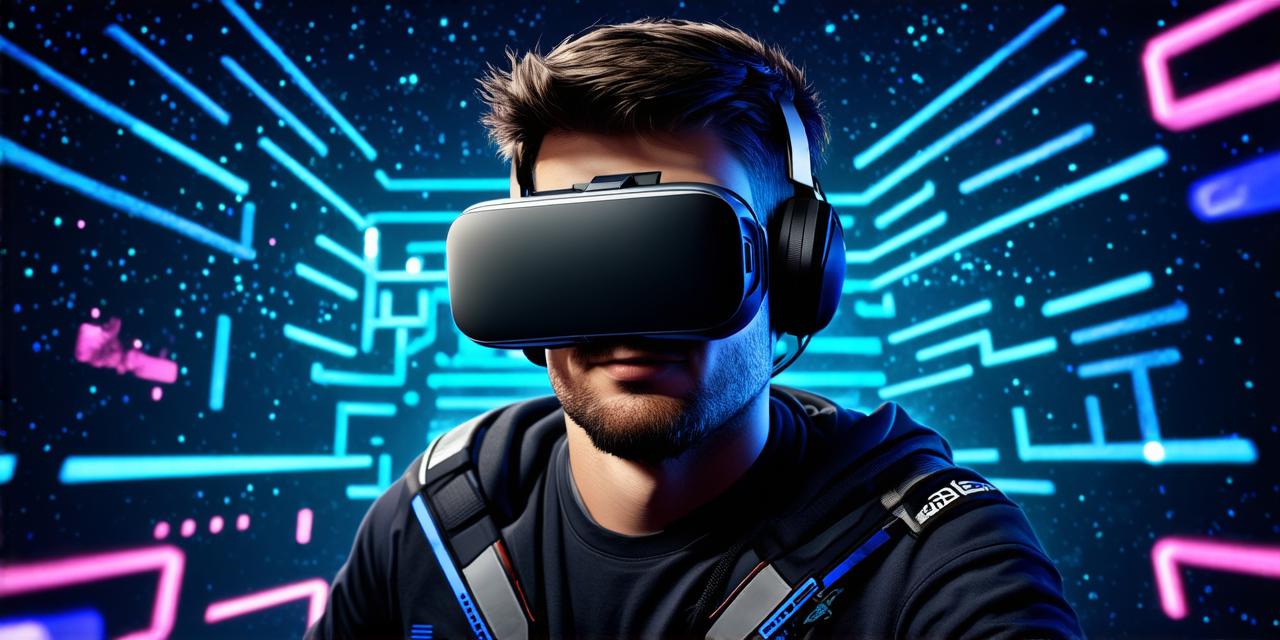<!DOCTYPE html>
Virtual Reality (VR) technology has come a long way, and it’s now possible to create highly immersive and interactive gaming experiences that were previously impossible. In this article, we will explore how to optimize VR game development using the powerful tool, Unreal Engine, for maximum results.
Unreal Engine: The Key to Successful VR Game Development
Unreal Engine is a comprehensive and versatile game engine that has been designed specifically for virtual reality (VR) game development. It includes a wide range of features and capabilities that make it easy to create high-quality, interactive VR experiences.
Key Features of Unreal Engine
- Real-time rendering
- Physics simulation
- AI capabilities
- Cross-platform support
Maximizing Results with Unreal Engine
Now that we have a better understanding of Unreal Engine’s features and capabilities, let’s look at how to optimize VR game development using this tool for maximum results.
1. Define Your Vision
The first step in any successful project is to define your vision of what you want to achieve. When developing a VR game, it’s important to have a clear understanding of the experience you want to create and the target audience. This will help you make informed decisions about which features and capabilities to use, and how to optimize your development process for maximum results.
2. Utilize Real-Time Rendering
Real-time rendering is one of Unreal Engine’s key features, and it’s a powerful tool that can help you optimize VR game development for maximum results. With real-time rendering, you can see what you are creating as you work, which makes it easier to make adjustments and refinements. This can save you time and effort in the long run by reducing the need for testing and debugging.
3. Implement Physics Simulation
Physics simulation is another key feature of Unreal Engine that can help optimize VR game development for maximum results. With physics simulation, you can simulate the behavior of physical objects in virtual space. This is especially useful for creating realistic simulations of real-world environments. By using physics simulation, you can create a more immersive and interactive experience for your players.
4. Add AI Capabilities
AI capabilities are becoming increasingly important in VR game development, as they allow you to create intelligent characters and NPCs that can make games more engaging and interactive. Unreal Engine includes a range of artificial intelligence tools that can help you add these capabilities to your VR games. By using AI, you can create more dynamic and responsive experiences for your players.
5. Optimize Cross-Platform Support
Finally, it’s important to optimize cross-platform support when developing a VR game with Unreal Engine. With cross-platform support, you can create VR experiences that can be enjoyed on a wide range of devices, including VR, mobile, desktop, and console. This means that you can reach a larger audience and increase the potential for revenue generation.
Case Study: Beat Saber by Beat Games
Beat Saber is a popular VR game that was developed using Unreal Engine. It’s a great example of how to optimize VR game development for maximum results. The game features a range of interactive and immersive experiences, including music-based puzzles and rhythm games.
One of the key ways in which Beat Saber was optimized for maximum results is through its use of real-time rendering. With real-time rendering, developers can see what they are creating as they work, which makes it easier to make adjustments and refinements. This allows for a faster development cycle and ensures that the final product is polished and refined.
In addition to real-time rendering, Beat Saber also utilizes physics simulation to create realistic and immersive gameplay experiences. This allows players to feel as though they are truly interacting with the virtual world and enhances their overall enjoyment of the game.
Finally, Beat Saber optimizes cross-platform support by allowing players to enjoy the game on a range of devices, including VR, mobile, desktop, and console. This ensures that the game reaches as many people as possible and maximizes revenue generation opportunities.
In conclusion, Unreal Engine is a powerful tool that can help developers optimize VR game development for maximum results. By defining your vision, utilizing real-time rendering, implementing physics simulation, adding AI capabilities, and optimizing cross-platform support, you can create immersive and engaging VR experiences that will captivate audiences and generate revenue.
